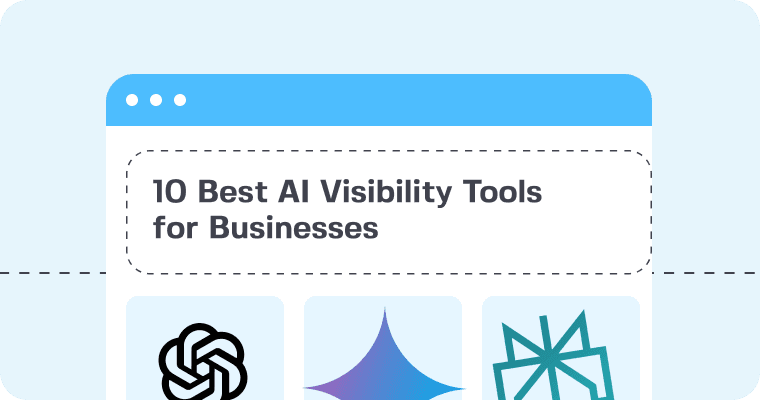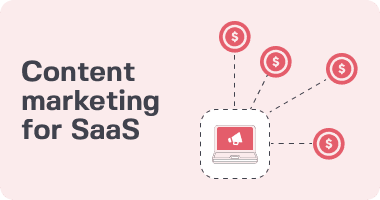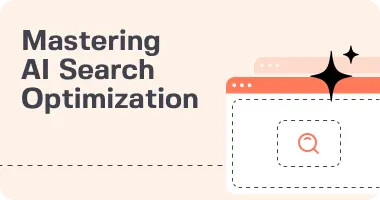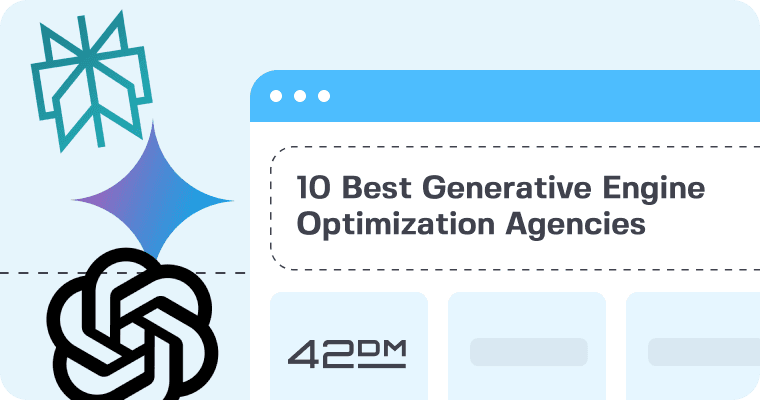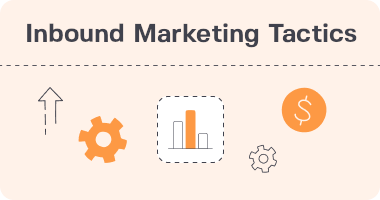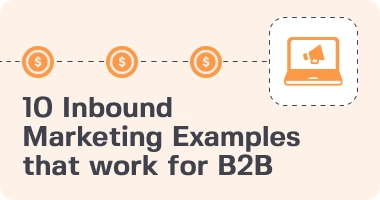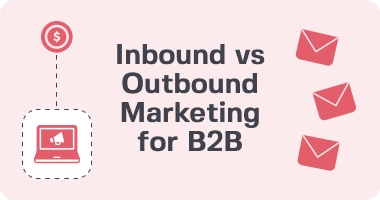Audience segmentation is like breaking down your audience into smaller, more manageable groups based on shared characteristics or behaviors.
So, how can audience segmentation enhance your inbound marketing efforts? When you understand what each segment wants, you can create messages that really speak to them.
In fact, segmentation makes firms 60% more likely to understand customers’ challenges and concerns and 130% more likely to know their intentions.
Take the B2B tech world, for instance—startups might prioritize quick deployment and scalability, while larger corporations focus on integration, security, and global support. Knowing these differences lets you craft messages that resonate with each group.
It’s simple: by enabling more personalized and relevant content delivery! It builds stronger relationships, boosts engagement, and drives actions like lead generation and customer retention.
Dive into our practical tips, covering the basics, step-by-step implementation, benefits, content optimization strategies, and analytics techniques. Let’s optimize your inbound results together!
Understanding Segmentation
Importance in Marketing
With segmentation, businesses can slash their marketing costs by up to 30%, focusing resources where they’ll have the most impact. Plus, it’s a win for customer engagement and loyalty, offering valuable interactions that nurture long-term relationships.
In fact, segmentation can amp up customer lifetime value (CLV) by up to 25% and customer satisfaction by up to 15%.
Segmentation vs Personas
Different from buyer personas, audience segmentation focuses on categorizing Consumers based on shared characteristics, while personas represent fictional characters embodying specific traits within those segments. Personas complement segmentation strategies by adding depth and human-like qualities to segmented data. Aligning personas with segmented audiences is crucial for crafting targeted messaging that speaks directly to each group’s needs and interests.
Benefits of Segmentation
Enhanced Targeting
Segmentation enables precise targeting of specific customer groups, allowing marketers to tailor their strategies accordingly. By dividing the audience based on demographics, behaviors, or preferences, companies can deliver targeted messaging that resonates with each segment. This approach significantly boosts conversion rates by providing relevant content to the right audience at the right time.
Segmentation can help businesses increase their conversion rate by up to 50%.
Moreover, segmentation helps in optimizing ad spend by directing resources towards high-potential leads, maximizing the return on investment.
Personalized Messaging
Personalized messages have a profound impact on customer engagement, fostering stronger relationships and brand loyalty. Through segmentation, companies can craft tailored content that speaks directly to the interests and needs of different audience segments. This level of personalization not only enhances customer experience but also increases the likelihood of conversions as customers feel valued and understood. The ability to send personalized messages creates a connection with consumers, leading to more meaningful interactions and higher engagement levels.
Data-Driven Insights
Data analytics play a crucial role in informing audience segmentation strategies, providing valuable insights into consumer behavior and preferences. By leveraging customer data effectively, businesses can create targeted campaigns that resonate with specific segments of their audience. These data-driven insights not only improve marketing decision-making but also enable companies to adapt their strategies in real-time based on consumer feedback and market trends.
Implementing Segmentation
Steps to Implementing Audience Segmentation
Identify Goals
Setting clear objectives for audience segmentation is crucial for success. Defined goals guide the creation of effective segmentation strategies. Aligning these goals with overall marketing objectives significantly enhances campaign performance.
Gather Data
Data for audience segmentation can be sourced from various channels. Collecting relevant customer information is key to successful segmentation. Accurate data collection ensures precise targeting and personalized campaigns.
Analyze Behavior
Analyzing customer behavior is paramount for effective segmentation. Behavioral data provides insights into customer preferences, aiding in the creation of targeted marketing campaigns. Understanding behavior patterns helps tailor content and offerings to specific audience segments.
Challenges Addressed
Identifying common challenges in audience segmentation is essential for overcoming obstacles. Strategies must be in place to address issues like data accuracy, segmentation complexity, and implementation hurdles. Overcoming these challenges is vital for successful segmentation that drives marketing effectiveness.
Optimizing Content
Content Tailoring
Segmenting content allows tailoring to specific audience preferences, increasing user engagement significantly. By delivering relevant content to each segment, consumers feel more connected and valued.
Tailoring content to specific audience segments offers benefits such as higher click-through rates, increased conversions, and improved brand loyalty. When consumers receive personalized content that resonates with their needs and interests, they are more likely to engage with the brand.
Content personalization plays a pivotal role in driving customer conversions by creating a more personalized experience for consumers. By analyzing segmentation data and understanding consumer behavior, marketers can tailor content that speaks directly to the target audience’s pain points and desires.
Campaign Adjustments
Adjusting campaigns based on segmentation insights is crucial for maximizing marketing efforts. By utilizing data from different audience segments, marketers can refine their strategies to better resonate with each group’s preferences and behaviors.
Segmentation data provides valuable insights that inform campaign optimization by highlighting what works best for each audience segment. Marketers can then adjust their messaging, timing, and channels to ensure maximum impact and relevance.
Adapting marketing strategies to meet the unique needs of different audience segments results in enhanced campaign performance and increased ROI. By tailoring campaigns to address specific segment characteristics, marketers can create more targeted and impactful messaging that drives engagement and conversions effectively.
Leveraging Analytics
Tracking Performance
Consumers can enhance their inbound marketing efforts by utilizing website analytics to track campaign performance. By analyzing data, they can determine the success of segmented campaigns. Key metrics, such as click-through rates and conversion rates, play a crucial role in evaluating the effectiveness of segmentation strategies. Through performance tracking, marketers can identify which segments are responding positively to their campaigns, enabling them to tailor future marketing initiatives accordingly.
Insightful Metrics
Understanding essential metrics is vital for evaluating the impact of audience segmentation on inbound marketing b2b. Metrics like customer engagement, bounce rates, and ROI provide valuable insights into consumer behavior patterns and campaign performance. By leveraging data-driven metrics, marketers gain a deeper understanding of their target audience’s preferences and behaviors. This knowledge allows them to create more personalized and targeted marketing strategies that resonate with their audience, ultimately leading to higher conversion rates and improved ROI.
Impact on Inbound Marketing
Improved Engagement
Audience segmentation enhances customer engagement by tailoring content to specific demographics and interests. This leads to increased interaction and response rates from the audience. Personalized messaging creates a sense of connection, fostering stronger relationships between brands and consumers.
Segmentation plays a crucial role in enhancing brand-consumer relationships by delivering relevant and targeted communication. By understanding the needs and preferences of different segments, brands can provide tailored solutions that resonate with their audience. This level of customization fosters loyalty and trust among consumers, driving long-term engagement.
Higher Conversion Rates
Segmentation significantly contributes to boosting conversion rates by delivering messages that speak directly to the recipient’s needs. Targeted messaging ensures that consumers receive content that aligns with their interests, leading to a higher likelihood of conversion. By guiding consumers through personalized conversion funnels, brands can streamline the purchasing process for improved results.
The strategic implementation of segmentation optimizes conversion funnels by eliminating unnecessary steps and focusing on what matters most to each segment. This approach increases efficiency and effectiveness in converting leads into customers, ultimately maximizing inbound marketing results.
Practical Tips and Strategies
Effective Tools
Consumers can leverage various tools for audience segmentation, such as demographic analysis software and customer relationship management (CRM) systems. These tools enable precise targeting based on factors like age, location, and purchasing behavior. Utilizing automation tools streamlines the process of creating personalized marketing campaigns tailored to segmented audiences. By automating tasks like email scheduling and content delivery, marketers can enhance efficiency and accuracy in reaching target segments effectively.
Moreover, CRM systems play a crucial role in organizing and managing segmented customer data. They allow businesses to track customer interactions, preferences, and purchase history efficiently. With CRM systems, companies can create detailed customer profiles for each segment, leading to more personalized marketing strategies that resonate with specific audience groups.
Continuous Improvement
To maximize the impact of audience segmentation, continuous optimization is key for Consumers. Regularly reviewing segmentation criteria and performance metrics helps identify areas for improvement. By analyzing campaign results and consumer feedback, Companies can refine their segmentation strategies for better targeting precision.
Implementing strategies for ongoing improvement involves conducting A/B testing on different messaging approaches or experimenting with new segmentation variables. This iterative approach enables Companies to adapt to changing consumer behaviors and preferences effectively.
Adapting to evolving market trends is essential for sustained success in inbound marketing efforts. By staying abreast of industry developments and consumer demands, Businesses can adjust their segmentation strategies accordingly to remain competitive in the market landscape.
Ready For It? Take the Next Step!
Understanding the importance of audience segmentation, it’s clear how it can supercharge your inbound marketing game. Implementing segmentation strategies, tweaking content, diving into analytics, and picking up some practical tips can make your inbound efforts seriously targeted and successful. So, why wait? Reach out to our experts and let’s level up your marketing together!
Frequently Asked Questions
How does audience segmentation benefit inbound marketing efforts?
Audience segmentation allows tailored content delivery to specific customer groups, increasing relevance and engagement. By understanding different audience segments, marketers can personalize strategies, leading to improved conversion rates and overall campaign effectiveness.
What are the key benefits of implementing audience segmentation in inbound marketing?
Implementing audience segmentation helps in delivering targeted messages, improving customer satisfaction, enhancing brand loyalty, optimizing marketing spend, and increasing ROI. It enables personalized communication that resonates with specific customer needs and preferences.
How can businesses effectively implement audience segmentation strategies?
To implement audience segmentation effectively, businesses should start by collecting relevant data about their customers, analyzing the data to identify distinct segments, creating personalized content for each segment, testing strategies for optimization, and continuously refining based on performance insights.
Why is optimizing content crucial in audience segmentation for inbound marketing?
Optimizing content ensures that the right message reaches the right audience at the right time. By tailoring content to match the interests and needs of specific segments, marketers can drive better engagement, conversions, and ultimately achieve their inbound marketing goals more effectively.
How does leveraging analytics contribute to successful audience segmentation strategies?
Leveraging analytics provides valuable insights into customer behavior, preferences, and interactions with content. By analyzing data metrics such as engagement rates, click-through rates, and conversion rates, marketers can refine segmentation strategies, measure performance accurately, and make data-driven decisions for continuous improvement.


